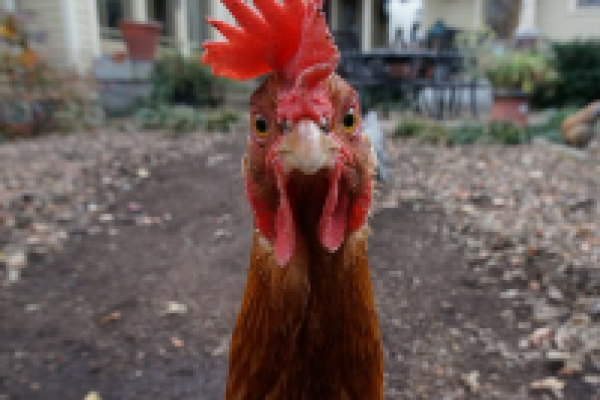2014-04-08

The European Union keeps millions of chicken for egg production. These animals often engage in severe feather pecking and sometimes even in cannibalistic behavior. Obviously, this causes serious welfare problems. To study the neural mechanisms of severe feather pecking, Pharmacologists from Utrecht and Wageningen universities as well as Biopsychologists from Bochum used divergent genetic lines that were selected for high or low feather pecking. These birds were analyzed for possible differences in central serotonin (5- HT) and 5-HIAA release in the limbic and prefrontal subcomponents of the caudal nidopallium by in vivo microdialysis. The results revealed that hens bred for high severe feather pecking had higher baseline levels of 5-HT in the caudal nidopallium but no differences in plasma tryptophan levels (precursor of 5-HT) and also no differences in presynaptic 5-HT storage. Thus, the data show that high aggressive encounters under industrial poultry conditions are associated with higher 5-HT releases in the prefrontal and limbic nidopallium.

The European Union keeps millions of chicken for egg production. These animals often engage in severe feather pecking and sometimes even in cannibalistic behavior. Obviously, this causes serious welfare problems. To study the neural mechanisms of severe feather pecking, Pharmacologists from Utrecht and Wageningen universities as well as Biopsychologists from Bochum used divergent genetic lines that were selected for high or low feather pecking. These birds were analyzed for possible differences in central serotonin (5- HT) and 5-HIAA release in the limbic and prefrontal subcomponents of the caudal nidopallium by in vivo microdialysis. The results revealed that hens bred for high severe feather pecking had higher baseline levels of 5-HT in the caudal nidopallium but no differences in plasma tryptophan levels (precursor of 5-HT) and also no differences in presynaptic 5-HT storage. Thus, the data show that high aggressive encounters under industrial poultry conditions are associated with higher 5-HT releases in the prefrontal and limbic nidopallium.